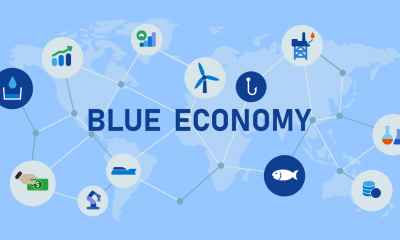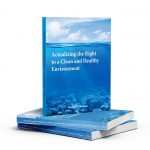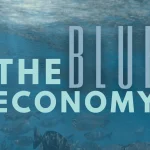By Hon. Prof. Kariuki Muigua, OGW, PhD, C.Arb, FCIArb is a Professor of Environmental Law and Dispute Resolution at the University of Nairobi, Member of Permanent Court of Arbitration, Leading Environmental Law Scholar, Respected Sustainable Development Policy Advisor, Top Natural Resources Lawyer, Highly-Regarded Dispute Resolution Expert and Awardee of the Order of Grand Warrior (OGW) of Kenya by H.E. the President of Republic of Kenya. He is the Academic Champion of ADR 2024, the African ADR Practitioner of the Year 2022, the African Arbitrator of the Year 2022, ADR Practitioner of the Year in Kenya 2021, CIArb (Kenya) Lifetime Achievement Award 2021 and ADR Publisher of the Year 2021 and Author of the Kenya’s First ESG Book: Embracing Environmental Social and Governance (ESG) tenets for Sustainable Development” (Glenwood, Nairobi, July 2023) and Kenya’s First Two Climate Change Law Book: Combating Climate Change for Sustainability (Glenwood, Nairobi, October 2023), Achieving Climate Justice for Development (Glenwood, Nairobi, October 2023) and Promoting Rule of Law for Sustainable Development (Glenwood, Nairobi, January 2024)*
Historically, companies have viewed sustainability performance and statements as a voluntary undertaking, largely devoid of legal or market risk. As a result, management and oversight of a company’s ESG and other sustainability issues including Corporate Social Responsibility CSR programs and reports often operated free from legal department oversight or interference. However, recent years have witnessed a proliferation of voluntary frameworks that have given rise to growing pressure on companies to adopt and report on rapidly evolving and expanding ESG standards.
The growth of mandatory disclosure requirements on sustainability issues including ESG factors has led to the rise of ESG related litigation where plaintiffs have pursued with growing success legal challenges to company claims and disclosures related to ESG performance. It has been pointed out that ESG-related legal and regulatory developments are maturing from soft law recommendations to hard law obligations in multiple jurisdictions.
As a result, there is increasing liability and risks associated with ESG factors that often results in disputes. It has been observed that ESG disputes continue to be on the rise globally often as a tool to push organisations to engage with the net zero transition with greater ambition, and to improve their ESG performance (including in relation to human rights) but also to challenge how ESG issues are being addressed.
ESG related legal actions can either involve claims challenging the veracity of ESG statements based largely on a company’s ESG conduct or suits directly contesting the propriety of company activities and performance. The first category majorly deals with ESG disclosure and reporting standards and such suits are majorly concerned with ESG misstatements and omissions. The second category is concerned about a company’s performance on various ESG tenets and such suits can involve a company’s alleged impacts or misconduct related to climate and human rights.
Claims challenging the veracity of ESG statements based largely on a company’s ESG conduct mostly take the form of misrepresentation and “greenwashing” litigation. Greenwashing has been described as a phenomenon wherein corporations may strategically disclose environmental performance data in a manner that deceives both the general public and potential investors. It is often used as a strategy used by companies to create the impression that they are compliant with ESG requirements while hiding the true level of compliance, through marketing. Through greenwashing, firms exhibit an appearance of transparency and disseminate substantial volumes of ESG data but demonstrate inadequate results in many dimensions of their ESG endeavours.
Greenwashing often results in ESG misrepresentation and is a major threat to sustainability. Greenwashing practices may result in a situation of information asymmetry, thereby causing detrimental effects on the financial interests of investors. Through greenwashing, it is plausible for corporations to conceal instances of pollution and even breaches of environmental legislation by engaging in symbolic compliance. It has been observed that corporations are increasingly facing private lawsuits related to greenwashing on various grounds, including misrepresentation in their marketing materials or corporate disclosure.
ESG litigation related to misrepresentation and greenwashing is majorly grounded in consumer protection and unfair competition claims. Under this framework, companies can be sued on grounds that their products and services contain false or misleading affirmative statements or omit material information on ESG factors. In addition, there have been an increase of ESG suits challenging ESG Statements in company reports, websites, and other marketing materials.
ESG litigation is also being widely embraced through suits directly contesting the propriety of company activities and performance. It has been pointed out that such claims can take the form of private law claims seeking monetary compensation (damages); private/public law claims seeking to change companies’ behaviour and/or bring about alternative outcomes such as compliance with ESG tenets; and public law claims directed at administrative decision-making, for instance judicial review cases on ESG. Under this category, there has been growth of ESG suits on issues such as climate change.
It has been observed that as governments increasingly implement net-zero carbon targets and companies establish their own carbon-neutral or carbon-negative pledges, climate change related disputes are growing throughout the world. Such disputes focus on issues such as infrastructure projects and whether these projects are aligned with the Paris Agreement, contribution by companies towards the effects of climate change, and commercial disputes arising out of climate change events such as insurance claims and claims related to potential force majeure events.
The practice of taking legal action over climate change has been on the rise in national courts all around the world, with the majority of cases being claimed as breaches of human rights. Such cases are concerned with themes such as climate rights, domestic enforcement, keeping fossil fuels in the ground, corporate accountability and responsibility, failure to adapt and the implications of adaptation, climate disclosures and greenwashing.
Climate litigation is thus a vital tool towards sustainability. In addition, human rights have emerged as key theme under ESG litigation. It has been correctly asserted that companies can face liability for human rights violations committed abroad by entities in their supply chain. In addition, it has been observed that the focus on supply chains has brought much greater scrutiny to the working conditions of those in the supply chain.
Concerns of human rights of employees and the communities that are impacted by the activities of the supply chains have become paramount. In addition, there is an increased recognition of the link between climate change and human rights and as a result, claims have been made against companies for poor health and safety conditions in their supply chain, particularly in cases of significant industrial accidents. Human rights are therefore central in ESG.
The ‘S’ tenet in ESG covers social factors including human rights, labour relations, employee welfare, community engagement, diversity and inclusion. Companies are now increasingly required to embrace Human Rights Due Diligence (HRDD) in order to demonstrate compliance with human rights standards63. In addition, there has been rise of private enforcement of human rights against companies through ESG litigation.
ESG litigation is therefore an essential tool aimed at fostering sustainability. Despite its efficacy, several hurdles may be experienced in ESG litigation. For example, in the field of climate litigation, some of the key challenges that may be experienced include determining whether or not the court has the jurisdiction to settle a dispute; locating the origin of an enforceable climate-related right or obligation; formulating a remedy that will lessen the plaintiffs’ injuries; and marshalling the science of climate attribution. In addition, it has been pointed out that challenges may arise in the quantification of damages in ESG litigation. It is imperative to navigate these among other challenges in order to effectively cover the landscape of ESG litigation.
*This is an extract from the Article: Fostering Environmental, Social and Governance (ESG) Litigation for Sustainability, Available at: https://kmco.co.ke/wp-content/uploads/2024/02/Fostering-Environmental-Social-and-Governance-ESG-Litigation-for-Sustainability.pdf (Accessed 2nd March 2024) by Hon. Prof. Kariuki Muigua, OGW, PhD, Professor of Environmental Law and Dispute Resolution, Senior Advocate of Kenya, Chartered Arbitrator, Kenya’s ADR Practitioner of the Year 2021 (Nairobi Legal Awards), ADR Lifetime Achievement Award 2021 (CIArb Kenya), African Arbitrator of the Year 2022, Africa ADR Practitioner of the Year 2022, Member of National Environment Tribunal (NET) Emeritus (2017 to 2023) and Member of Permanent Court of Arbitration nominated by Republic of Kenya and Academic Champion of ADR 2024. Prof. Kariuki Muigua is a foremost Environmental Law and Natural Resources Lawyer and Scholar, Sustainable Development Advocate and Conflict Management Expert in Kenya. Prof. Kariuki Muigua teaches Environmental Law and Dispute resolution at the University of Nairobi School of Law, The Center for Advanced Studies in Environmental Law and Policy (CASELAP) and Wangari Maathai Institute for Peace and Environmental Studies. He has published numerous books and articles on Environmental Law, Environmental Justice Conflict Management, Alternative Dispute Resolution and Sustainable Development. Prof. Muigua is also a Chartered Arbitrator, an Accredited Mediator, the Managing Partner of Kariuki Muigua & Co. Advocates and Africa Trustee Emeritus of the Chartered Institute of Arbitrators 2019-2022. Prof. Muigua is a 2023 recipient of President of the Republic of Kenya Order of Grand Warrior (OGW) Award for his service to the Nation as a Distinguished Expert, Academic and Scholar in Dispute Resolution and recognized among the top 5 leading lawyers and dispute resolution experts in Band 1 in Kenya by the Chambers Global Guide 2024 and was listed in the Inaugural THE LAWYER AFRICA Litigation Hall of Fame 2023 as one of the Top 50 Most Distinguished Litigation Lawyers in Kenya and the Top Arbitrator in Kenya in 2023.
References
African Development Bank Group., ‘Environmental, Social and Governance (ESG).’ Available at https://www.afdb.org/en/topics-and-sectors/topics/environmental-social-and-governance-esg (Accessed on 05/02/2024).
Ahurst., ‘ESG Litigation – Get Ready Respond and Resolve.’ Available at https://www.ashurst.com/en/insights/esg-litigation—get-ready-respond-and-resolve/ (Accessed on 05/02/2024).
Banda ML and Fulton CS, ‘Litigating Climate Change in National Courts: Recent Trends and Developments in Global Climate Law’ (2017) 47 Environmental Law Reporter.
Barbosa. A et al., ‘Integration of Environmental, Social, and Governance (ESG) Criteria: Their Impacts on Corporate Sustainability Performance.’ Humanit Soc Sci Commun 10, 410 (2023). Available at https://doi.org/10.1057/s41599-023-01919-0 (Accessed on 03/02/2024).
British Business Bank., ‘What is ESG – A Guide for Businesses.’ Available at https://www.britishbusiness-bank.co.uk/finance-hub/business-guidance/sustainability/what-is-esg-aguide-for-smallerbusinesses/ (Accessed on 03/02/2024).
Fitzmaurice. M., ‘The Principle of Sustainable Development in International Development Law.’ International Sustainable Development Law., Vol 1.
Giovannoni. E., & Fabietti. G., ‘What Is Sustainability? A Review of the Concept and Its Applications.’ In: Busco, C., Frigo, M., Riccaboni, A., Quattrone, P. (eds) Integrated Reporting. Springer, Cham. Available at https://doi.org/10.1007/978-3-319-02168-3_2 (Accessed on 03/02/2024).
Global Campus of Human Rights., ‘Rethinking Environmental, Social, and Governance (ESG) Investing for Successful Sustainability and Human Rights.’ Available at https://gchumanrights.org/gcpreparedness/preparedness-development/article-detail/rethinkingenviron mental-social-andgovernance-esg-investing-for-successful-sustainability-and-human-rights5039.html (Accessed on 05/03/2024).
Gramatidis.B & Emvalomenos. D., ‘Sustainability in Dispute Resolution -Mediation as an ESG Practice.’ Available at https://www.bahagram.com/sustainability-in-dispute-resolution-mediation-as-anesgpractice/ (Accessed on 05/02/2024).
Hackett. D et al., ‘Growing ESG Risks: The Rise of Litigation.’ Available at https://www.bakermckenzie.com/- /media/files/insight/publications/2020/10/growing_esg_risks _the_rise_of_litigation.pdf (Accessed on 05/02/2024).
Heinberg. R., ‘What Is Sustainability?.’ Available at https://cdn.auckland.ac.nz/assets/arts/documents/What%20is%20Sustainability.pdf (Accessed on 03/02/2024).
Kemp. B et al., ‘The Rise of ESG Litigation and Horizontal Human Rights Enforcement.’ Available at https://www.lexology.com/library/detail.aspx?g=07a94453-f2aa-490a-a7e1-f6c25256cbf9 (Accessed on 05/02/2024).
Latham & Watkins LLP., ‘ESG Litigation Roadmap.’ Available at https://www.lw.com/admin/upload/SiteAttachments/ESG-Litigation-Roadmap.pdf (Accessed on 05/02/2024).
Li. T., et al., ‘ESG: Research Progress and Future Prospects.’ Available at https://pdfs.semanticscholar.org/0dd4/941ebea33330210daff5f37a1c8cdd0547d7.pdf (Accessed on 03/02/2024).’
Li. T., et al., ‘ESG: Research Progress and Future Prospects.’ Op Cit 24 Ahmad. H., Yaqub. M., & Lee. S. H., ‘Environmental-, Social-, and Governance-Related Factors for Business Investment and Sustainability: A Scientometric Review of Global Trends.’ Available at https://link.springer.com/article/10.1007/s10668-023-02921 (Accessed on 03/02/2024).
Mathis. S., & Stedman. C., ‘Environmental, Social and Governance (ESG).’ Available at https://www.techtarget.com/whatis/definition/environmental-social-and-governanceESG#:~:text= Environmental%2C%20social%20and%20governance%20(ESG)%20is%20a%20framework%2 0used,and%20opportunities%20in%20those%20areas (Accessed on 03/02/2024).
May. S., & Radcliffe. M., ‘The Evolving ESG litigation Landscape.’ Available at https://www.grantthornton.co.uk/insights/the-evolving-esg-litigation-landscape/ (Accessed on 05/02/2024).
McKenzie. S., Philippides. M., & De. Meyer., ‘A Look to the Future: Litigation Risks Faced by the Financial Sector in Relation to ESG Statements.’ Available at https://www.investafrica.com/insights-/a-look-to-thefuture-litigation-risks-faced-by-the-financial-sector-in-relation-to-esg-statements (Accessed on 05/03/2024).
Mikhaeel. M., ‘How Human Rights Due Diligence Affects the ‘E’ in ESG.’ Available at https://www.financierworldwide.com/how-human-rights-due-diligence-affects-the-e-in-esg (Accessed on 05/02/2024).
Muigua. K., ‘(Re) Examining Environmental, Social and Governance (ESG) and Human Rights.’ Available at https://kmco.co.ke/wp-content/uploads/2024/01/Re-Examining-Environmental-Social-andGovernance-ESG-and-Human-Rights.pdf (Accessed on 05/02/2024).
Muigua. K., ‘Greenwashing: A Hindrance to Achieving Sustainability?’ Available at https://kmco.co.ke/wp-content/uploads/2023/08/Greenwashing-A-hindrance-to-AchievingSustainability -Kariuki-Muigua-August-2023.pdf (Accessed on 05/02/2024).
Muigua. K., ‘Promoting Climate Litigation in Kenya for Sustainability.’ Available at https://kmco.co.ke/wp-content/uploads/2023/08/Promoting-Climate-litigation-in-Kenya-forSustainability-Kariuki-Muigua-August-2023.pdf (Accessed on 05/02/2024).
Norton. C., ‘Growing ESG Litigation Is Advancing Thinking on New Practices Needed.’ Available at https://www.linkedin.com/pulse/growing-esg-litigation-advancing-thinking-new-practicesnorton?utm_source=share&utm_medium=member_android&utm_campaign=share_via (Accessed on 03/02/2024).
Peterdy. K., & Miller. N., ‘What is ESG?’ Available at https://corporatefinanceinstitute.com/resources/esg/esg-environmental-social-governance (Accessed on 03/02/2024).
Runyon. N., ‘How Litigation Funding Drives Progress in the ESG Agenda.’ Available at https://www.thomsonreuters.com/en-us/posts/esg/litigation-funding-esgagenda/#:~:text=A%20driving %20force %20in%20access%20to%20justice&text=Litigation%20funding%2 0also%20provides%20the,of %20representation%20or%20legal%20strategy. (Accessed on 05/02/2024).
Stuart. L.G et al., ‘Firms and Social Responsibility: A Review of ESG and CSR Research in Corporate Finance.’ Journal of Corporate Finance 66 (2021): 101889.
Thailand Arbitration Center., ‘Alternative Dispute Resolution: Significance of ESG in Arbitration.’ Available at https://thac.or.th/alternative-dispute-resolution-significance-esg-arbitration/ (Accessed on 05/02/2024).
The 3 pillars of Sustainability: Environmental, Social and Economic., Available at https://www.enel.com/company/stories/articles/2023/06/three-pillars-sustainability (Accessed on 03/02/2024).
United Nations General Assembly., ‘Transforming Our World: the 2030 Agenda for Sustainable Development.’ 21 October 2015, A/RES/70/1., Available at https://sustainabledevelopment.un.org/content/documents/21252030%20Agenda%20for%20Sustainabl e%20Development%20web.pdf (Accessed on 03/02/2024).
United States Environmental Protection Agency., ‘What is Sustainability.’ Available at https://www.epa.gov/sustainability/learn-about-sustainability (Accessed on 03/02/2024).
World Commission on Environment and Development., ‘Our Common Future.’ Oxford, (Oxford University Press, 1987).
Xia, F., Chen, J., Yang, X., Li, X. and Zhang, B., ‘Financial Constraints and Corporate Greenwashing Strategies in China’ (2023) 30 Corporate Social Responsibility and Environmental Management 1770.


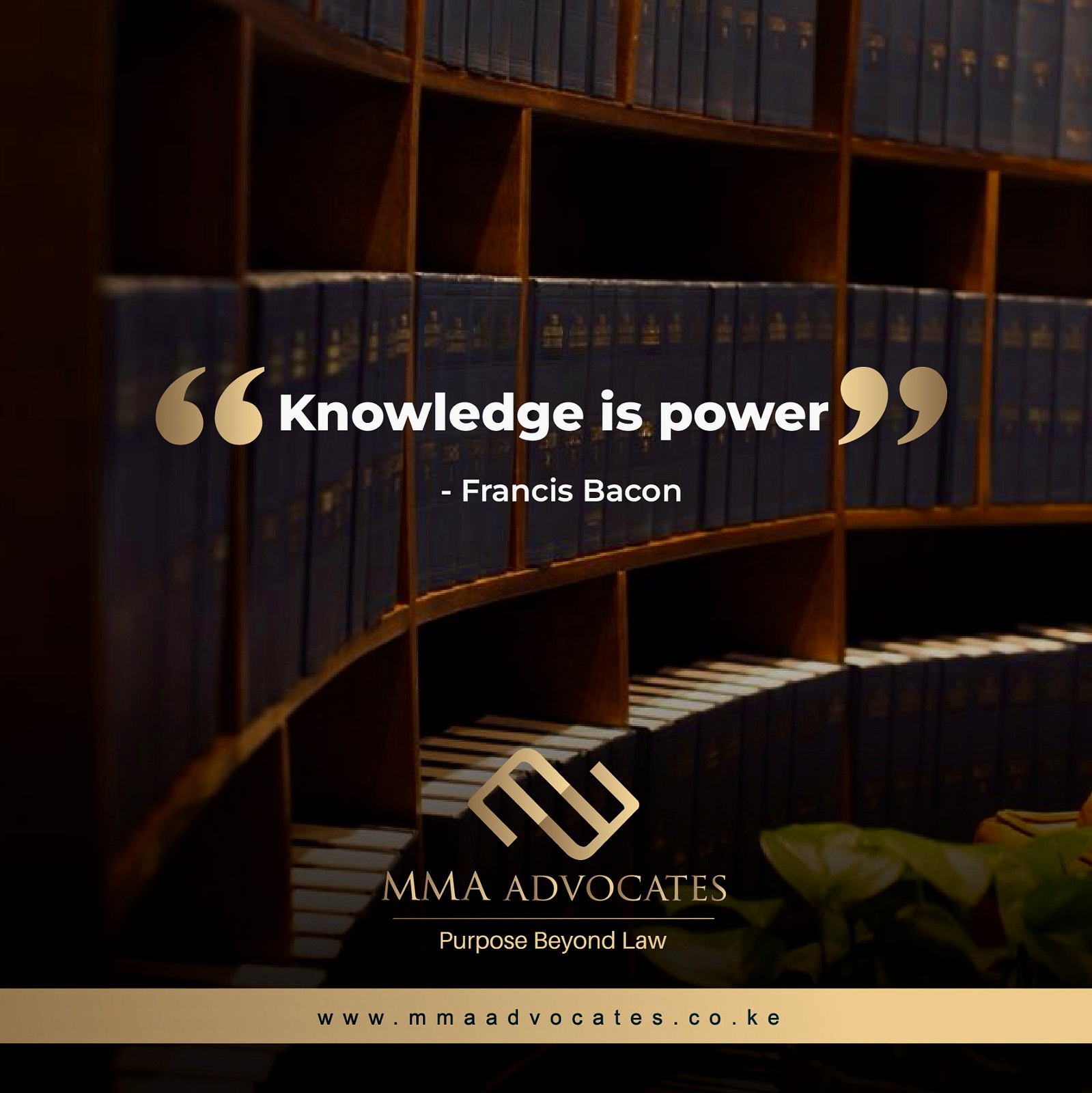


 Lawyers2 years ago
Lawyers2 years ago
 News & Analysis3 years ago
News & Analysis3 years ago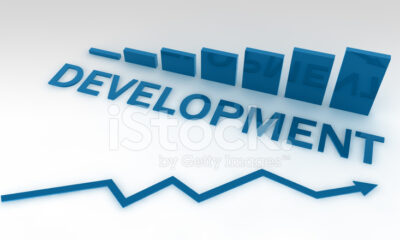
 News & Analysis3 years ago
News & Analysis3 years ago
 Lawyers2 years ago
Lawyers2 years ago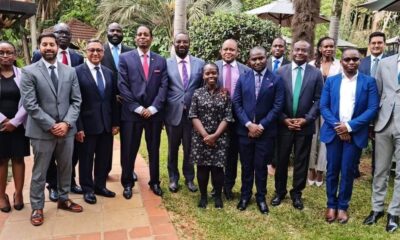
 News & Analysis3 years ago
News & Analysis3 years ago
 News & Analysis1 year ago
News & Analysis1 year ago
 News & Analysis3 years ago
News & Analysis3 years ago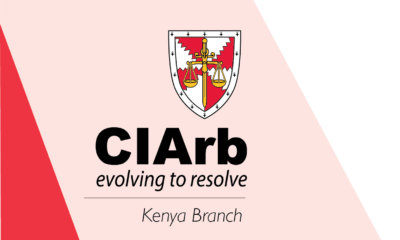
 News & Analysis1 year ago
News & Analysis1 year ago















